The Dracaena trifasciata, commonly known as the snake plant, is a popular and easy-to-maintain indoor plant. With its beauty and resilience, it has become a favorite among plant enthusiasts.
In this comprehensive care guide, we will provide some tips and everything you need to know to keep your snake plant healthy and thriving.
Understanding Dracaena Trifasciata


Snake plants are indoor foliage plants characterized by their erect, blade-like leaves displaying a diverse spectrum of green hues and variegated designs.
These resilient plants originate from West Africa and have adapted to thrive in dry environments due to their succulent-like leaves that adeptly retain water.
Snake plants are enduring companions capable of thriving over extended periods because of their perennial nature and slowly expanding rhizomatous roots.
Beyond their visually captivating leaves, these plants occasionally produce petite, aromatic flowers adorning their lofty stems.
Types and Varieties of Dracaena Trifasciata


Dracaena trifasciata offers a range of captivating cultivars each with distinct attributes.
Whether you’re seeking a compact statement piece or a towering focal point, the various options can cater to your individual aesthetic tastes and spatial considerations.
The following list highlights just a few of the fascinating varieties of snake plants:
- Hahnii: Hahnii stands out as a compact and charming variety of the snake plant family. Its petite size and tightly clustered leaves make it an ideal choice for smaller spaces or as an accent on tabletops and shelves.
The leaves showcase intricate patterns and variations in shades that add an artistic touch to any space.
- Laurentii: For those who want to make a bold statement, the Laurentii variety offers an elegant solution. With its tall and graceful stature, this variety commands attention as it reaches skyward.
The standout feature of Laurentii is its distinctive yellow-edged leaves that create a striking contrast against the deep green backdrop.
- Moonshine: Moonshine is a snake plant variety that has silvery, pale green leaves. This variety can effortlessly complement modern and minimalist design aesthetics.
The gentle yet attractive mix of colors in the Moonshine variety makes it easy to match with different styles. Plus, its natural toughness means you won’t need to fuss over it too much.
- Bantel’s Sensation: For those captivated by unique patterns, the Bantel’s Sensation variety presents a visually stunning option.
This snake plant variety looks fancy and modern because of its white vertical stripes against deep green foliage.
- Black Gold: The Black Gold variety showcases an enchanting blend of dark green and rich black hues on its leaves that create a dramatic and sophisticated visual impact.
The striking contrast between the dark tones and the surrounding environment makes Black Gold a remarkable focal point in any space.
Snake Plant Care Guidelines
Caring for your Dracaena trifasciata is a straightforward yet vital task to ensure its long-lasting health and beauty. Here’s a closer look at the essential care guidelines that will keep your plant thriving:
Light Requirements
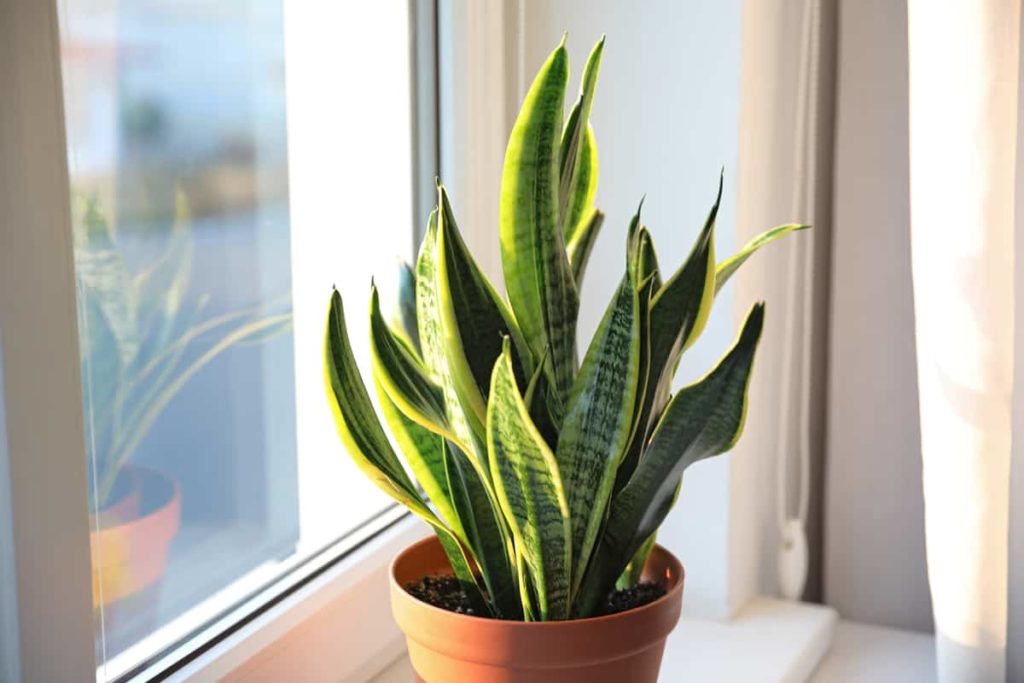

Snake plants are known for their adaptability when it comes to light. They can endure a variety of light conditions, which makes them perfect for different indoor settings.
Although they prefer indirect sunlight, they’re equally comfortable in low-light environments. Remember, though, that exposing them to direct sunlight should be avoided because it could harm their leaves and lead to sunburn.
Watering
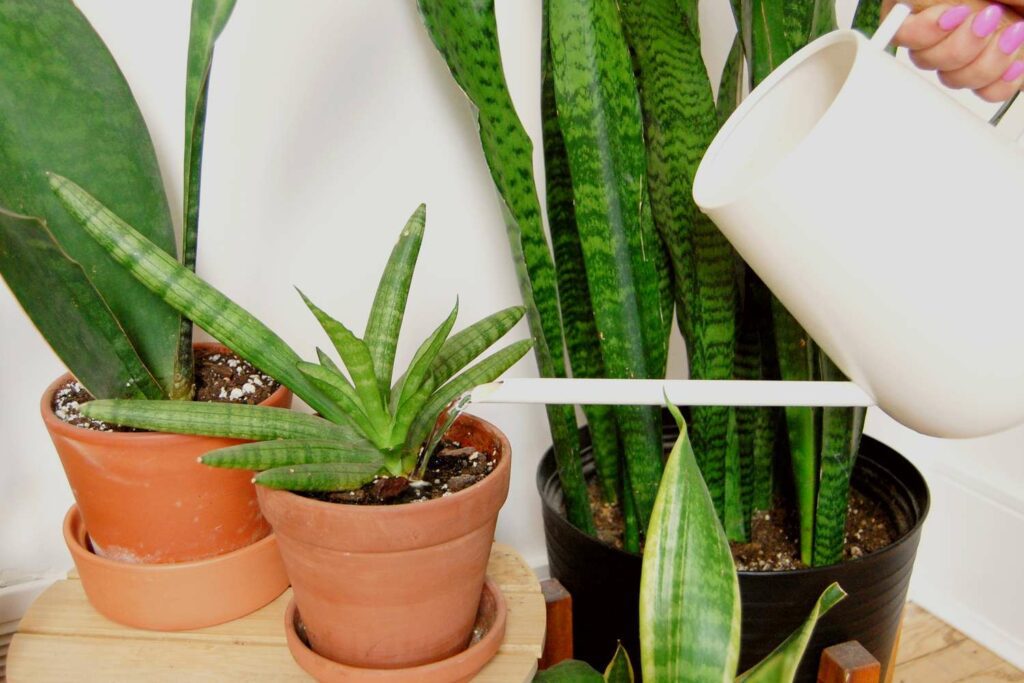

The snake plant’s fame as a low-maintenance favorite is largely due to its minimal water needs. A key rule is to allow the soil to dry out between waterings.
Overwatering should be carefully avoided because it can lead to root rot and harm your plant.
This is particularly crucial during the winter months when the plant’s growth slows down. In these cooler months, it’s perfectly fine to water it only once a month if the soil remains damp after a span of 2 weeks.
Soil Requirements
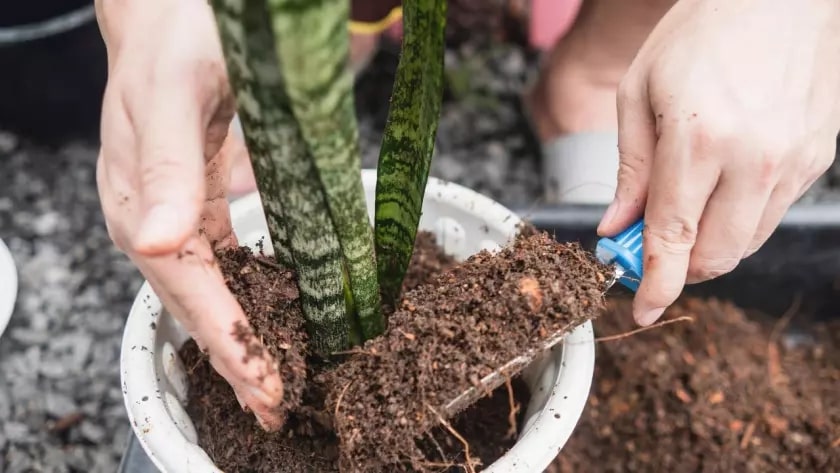

Choosing the right soil mix is vital for the optimal growth of your snake plant. A well-draining potting mix is essential to prevent excess water from accumulating, which can damage the roots.
To achieve the perfect texture, consider mixing cactus or succulent soil with perlite. This combination ensures that water flows through the soil effectively while providing the necessary support for healthy root development.
Temperature and Humidity
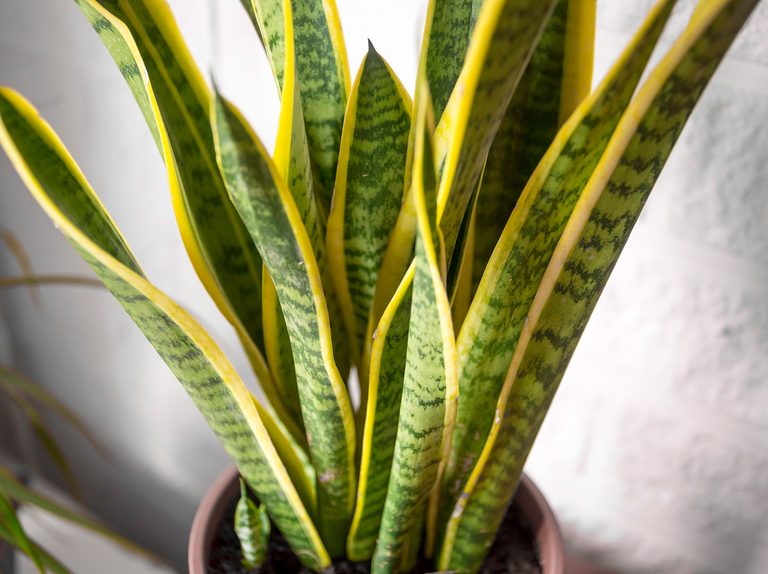

Hardy snake plants are well-suited to typical indoor temperatures, which generally range from 70°F to 90°F. It’s also best to maintain indoor humidity levels within the range of 30% to 50%, which also aligns with the typical humidity found in most households.
It’s important to remember to shield them from drafts and sudden temperature changes. These can cause stress and negatively impact their well-being.
Feeding and Fertilization
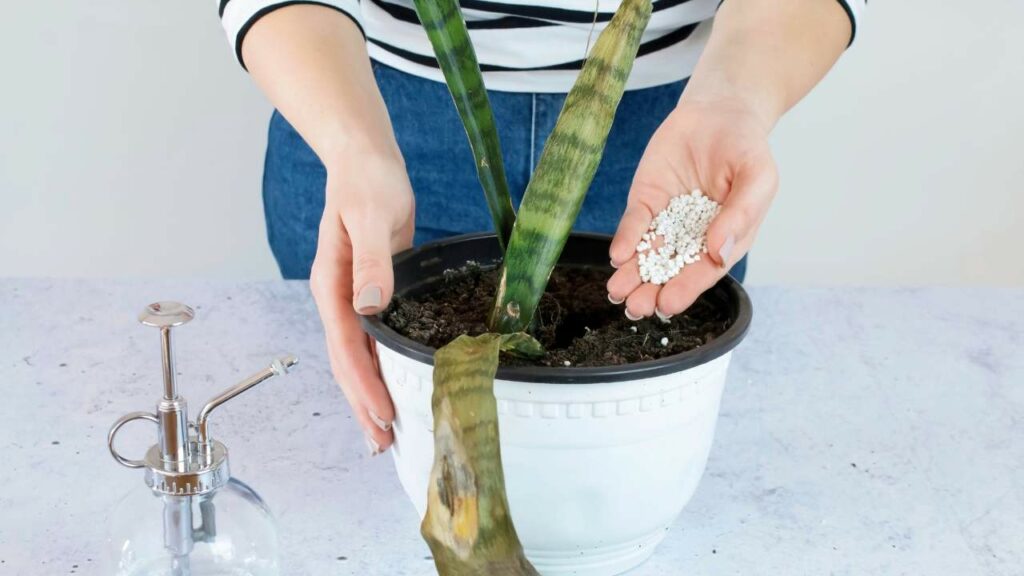

Support your snake plant’s growth during its active growing season, which typically spans from spring to summer.
Feed it with a balanced liquid fertilizer once every month to provide essential nutrients. To prevent overfeeding, dilute the fertilizer to half-strength.
As fall and winter arrive, the snake plant enters its dormant period. It won’t be growing much at all during this period, so it won’t need fertilizers at all.
Propagation Methods
Multiplying your collection of snake plants is an exciting venture, and understanding the various propagation methods can pave the way for successful growth. Let’s explore these techniques:
Soil Propagation Method
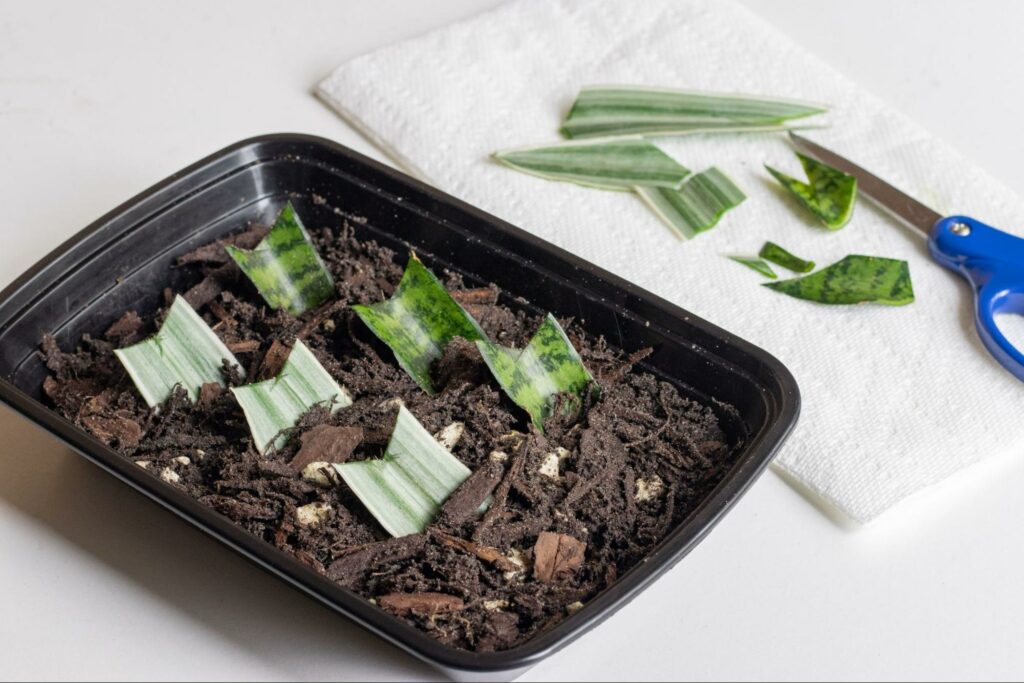

Opting for the soil propagation method provides a convenient way to propagate Dracaena trifasciata.
It eliminates the need to maintain root cuttings in water and allows you to combine different varieties, like Dracaena angolensis and Dracaena moonshine, in one pot.
However, keep in mind that the new plants resulting from this method might not exhibit variegated patterns. Additionally, observing root growth might require digging up the plant for inspection.
Here’s how you can propagate Dracaena trifasciata using soil:
- Begin by cutting off a single leaf, snipping it near the soil line.
- Take the cut leaf and snip it into pieces, each measuring about 2 inches.
- Allow the leaf cuttings to develop a callus over a couple of days. A callus is a soft, dry, whitish tissue that forms as the cut heals over the leaf’s surface.
- Plant each of these leaf cuttings into well-draining potting soil, such as Rosy Soil’s snake plant soil.
Water Propagation Method
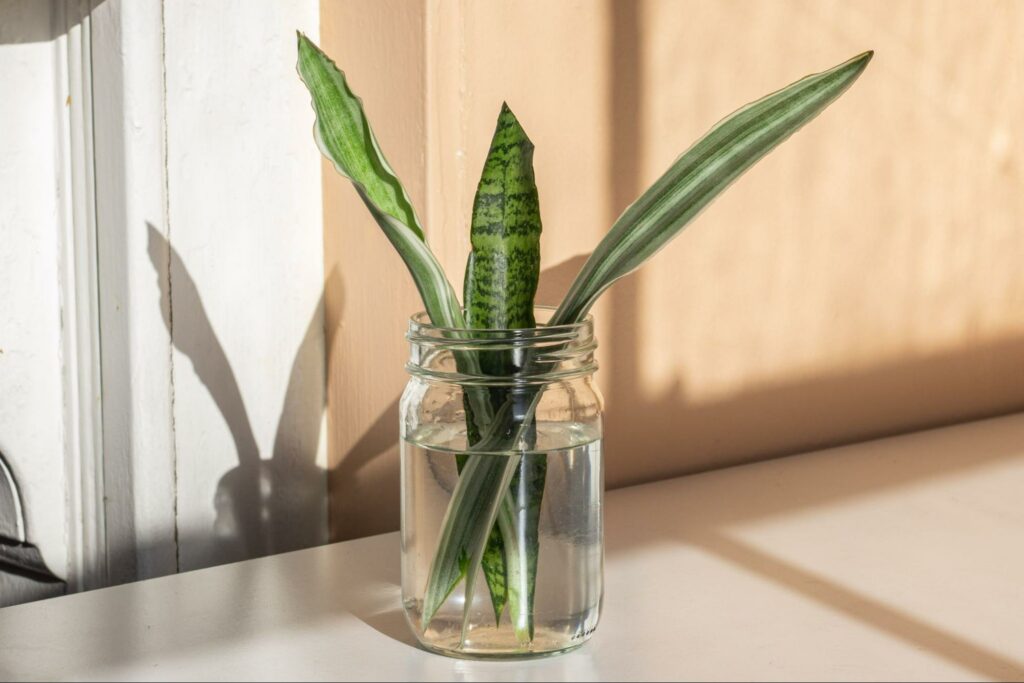

Doing the water propagation method offers a simple and hands-on way to propagate your snake plant. The visible root growth provides a clear progress indication.
It’s worth noting, though, that if you’re working with variegated varieties, this approach may not preserve the variegation. For such cases, division propagation is advised.
You just have to be patient with this method, as it’s known to be a slower route to new growth. Here’s how to do it:
- Carefully cut a leaf from the mother plant, making sure it’s close to the soil.
- Submerge the lower part of the cutting in water, ensuring that about 25% of the leaf is covered.
- Place the cutting in an area with ample indirect sunlight.
- Regularly replace the water on a weekly basis.
- As an option, once roots start to develop, you can transfer the cutting to soil.
Rhizome Propagation Method
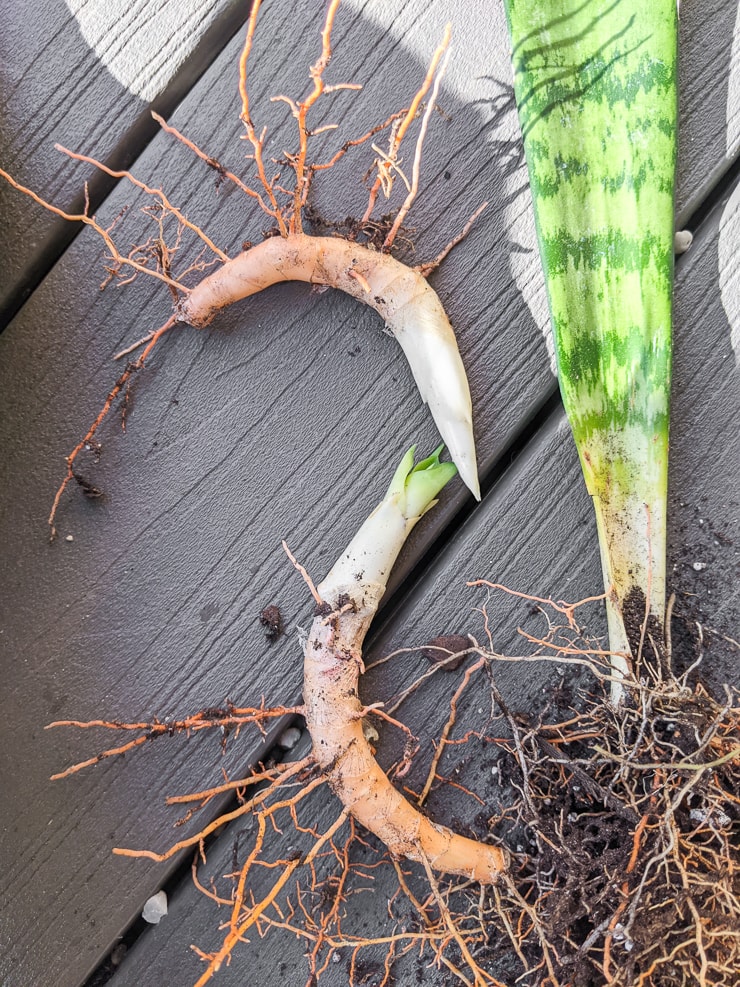

Rhizome propagation offers a swift way to increase your snake plant collection. This method eliminates the need to divide the mother plant, making it particularly convenient.
It’s also a suitable method for preserving variegation in snake plants. However, keep in mind that uprooting the parent plant is necessary for this method, and extra caution is needed to prevent harm during the process.
Here’s how you can propagate your plant using rhizomes:
- Gently slide your plant out of its pot.
- Look for rhizomes, which are underground stems located near the root system that produce roots and shoots.
- Carefully cut off a rhizome from the base of the plant.
- Let the rhizome cutting develop a callus for 1–2 days. This helps prevent root rot.
- Once calluses have formed, replant the rhizome using a potting mix.
Plant Propagation through Division
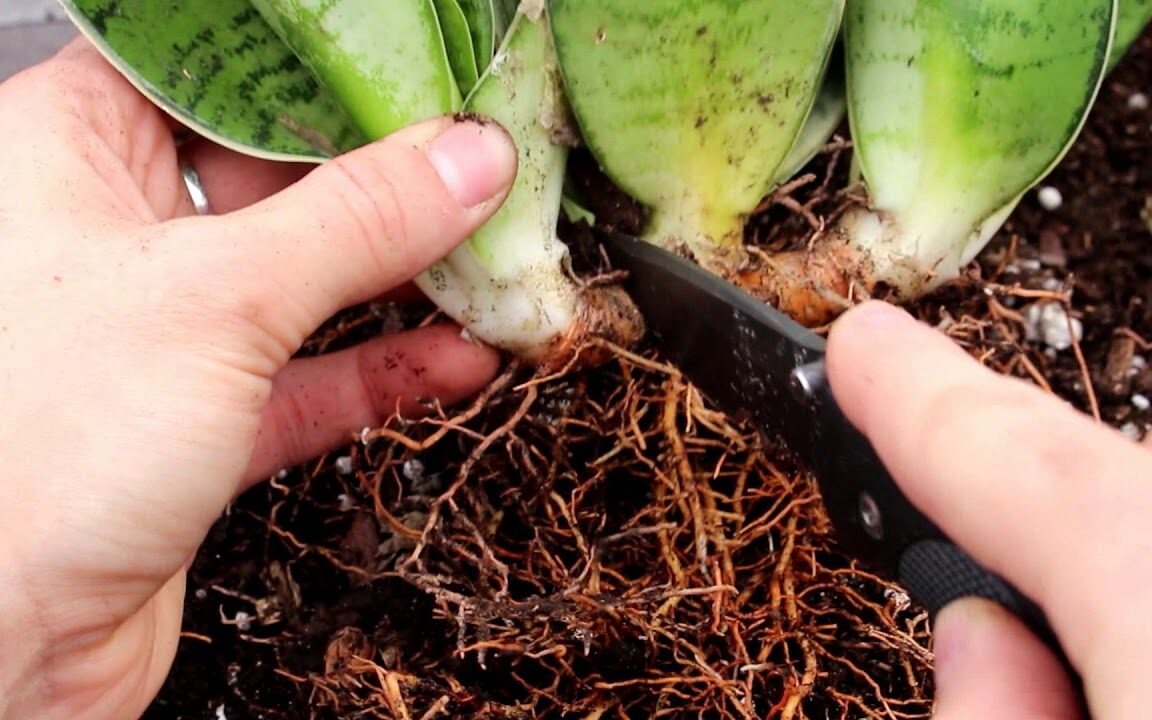

Propagation through division offers a quicker route compared to individual leaf propagation. This method also ensures that the variegation characteristics of the original snake plant are preserved in the new leaves.
Keep in mind, though, that to carry out this method, you’ll need a larger snake plant with several growths. Here’s how you can do it:
- Carefully lay the parent plant on its side and gently slide it out of the pot.
- Using a sharp knife, scissors, or shears, divide the root cluster of the mother plant into the desired number of segments.
- Each segment should have a minimum of three rhizomes, a leafy top, or a snake plant pup attached.
- Plant these segments into pots with well-draining soil.
Repotting
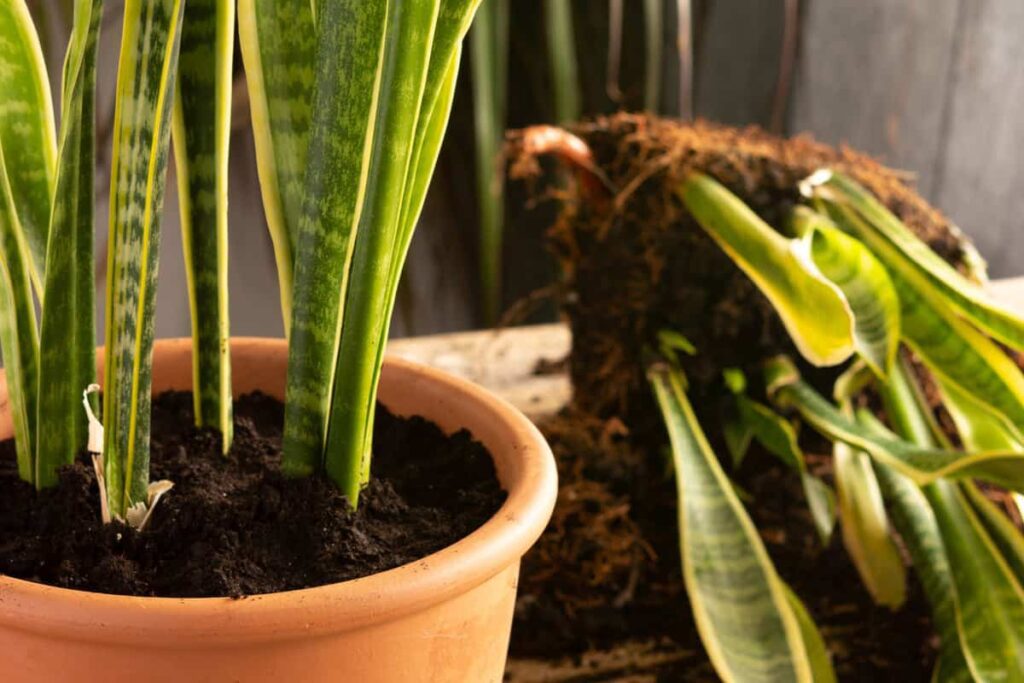

Repotting your snake plant is a crucial task that ensures both its well-being and continuous growth. Understanding when and how to repot is essential for maintaining its vitality.
Here’s an in-depth look at the process:
When to Repot
Keep an eye on your snake plant’s growth. When you notice its roots becoming cramped within its current pot or it visibly outgrowing its container, it’s time to consider repotting.
Signs of a root-bound plant include roots poking out from the pot’s drainage holes or becoming tightly coiled within the soil.
The Repotting Process
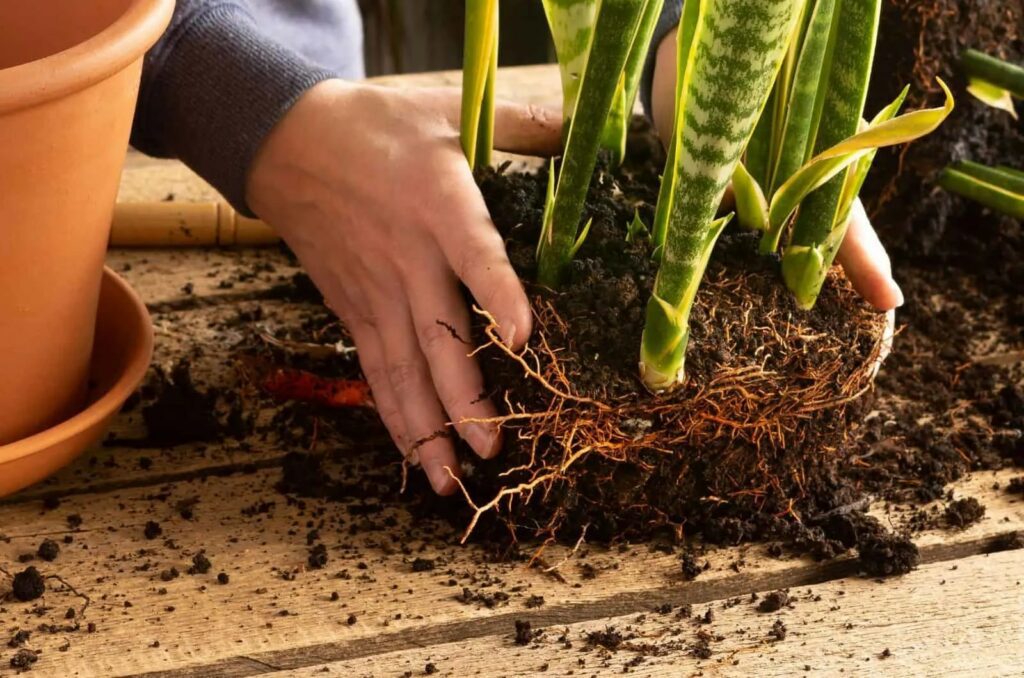

- Choose the Right Time: Aim to repot during the active growing season, which typically aligns with spring or early summer. This ensures your snake plant has ample time to acclimate to its new environment.
- Select a Suitable Pot: Opt for a pot that is slightly larger than the current one. A container with drainage holes is vital to prevent overwatering and root rot.
- Prep the Plant: Gently remove the snake plant from its current pot and make sure not to damage its roots. If the root ball is tightly bound, you can gently loosen it to encourage healthier growth.
- Refresh the Soil: Prepare a well-draining potting mix, ideally one designed for succulents or snake plants.
This mixture helps prevent waterlogging and supports root health. A blend of potting soil and perlite can achieve the desired texture.
- Repot with Care: Place your snake plant in the new pot and ensure that its base is at the same level as before. Fill in the gaps with the fresh soil mix, gently patting it down to provide stability.
- Watering Post-Repotting: After repotting, give your plant a gentle watering to help settle the new soil. Avoid overwatering, as the plant may experience some stress as it adapts to its new home.
Repotting Frequency
Repotting every 3–4 years is generally sufficient for Dracaena trifasciata. This allows the plant to have enough space to grow without becoming too root-bound.
However, remember that every plant is unique, so observe your snake plant’s growth and adjust the repotting schedule accordingly.
Common Issues and Troubleshooting
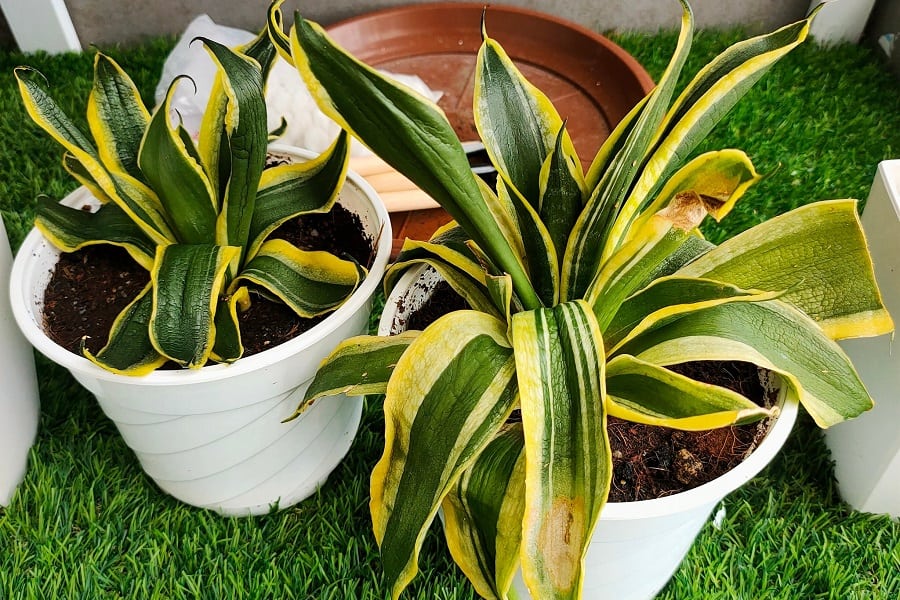

As devoted plant parents, we strive to provide our snake plants with the best care possible. However, challenges can arise from time to time.
Understanding common issues and knowing how to troubleshoot them ensures the well-being of your cherished green companions. Let’s get into some potential problems and their solutions:
- Pests: Vigilance is the key to keeping your Dracaena trifasciata pest-free. Keep an eye out for common invaders such as mealybugs and spider mites.
If you spot these unwelcome guests, it’s important to act promptly. Isolate the affected plant from others to prevent the pests from spreading.
For treatment, consider using insecticidal soap, which is a safe and effective solution to eliminate pests and prevent further infestation.
- Yellowing Leaves: The appearance of yellow leaves can be an indicator of overwatering. The soil might be retaining too much moisture, causing stress to the roots.
To address this issue, adjust your watering routine and allow the soil to dry out more thoroughly between waterings. Also, ensure proper drainage and consider repotting if the roots are becoming cramped.
- Browning and Drooping Leaves: Brown tips on your snake plant’s leaves are often linked to underwatering. This might mean the plant isn’t receiving sufficient moisture.
To remedy this, water the plant adequately, ensuring that water reaches the root zone. It’s also worth examining the humidity levels, as excessively dry air can lead to leaf issues.



